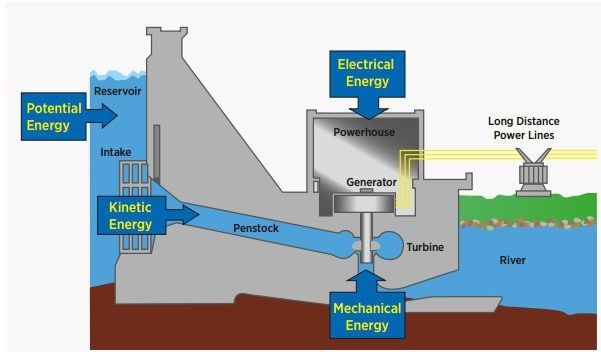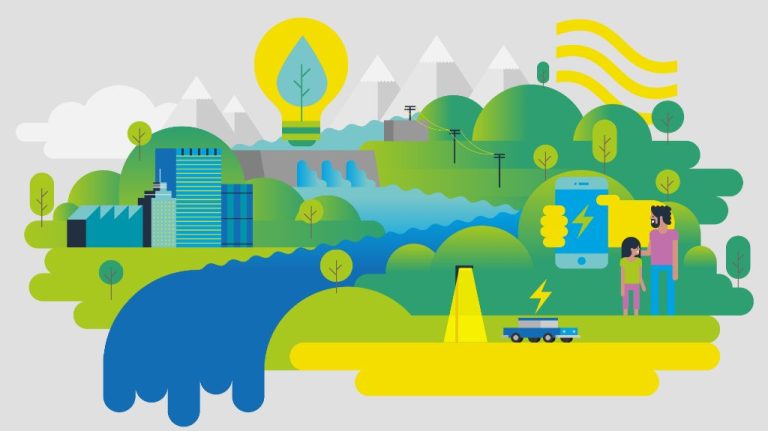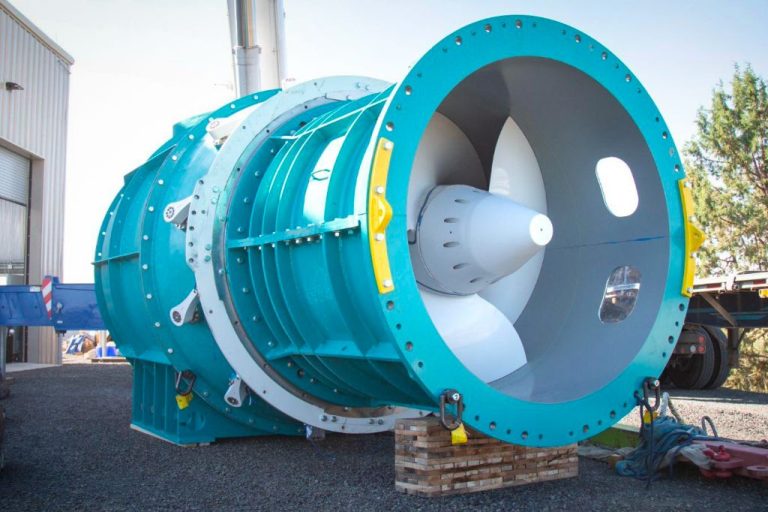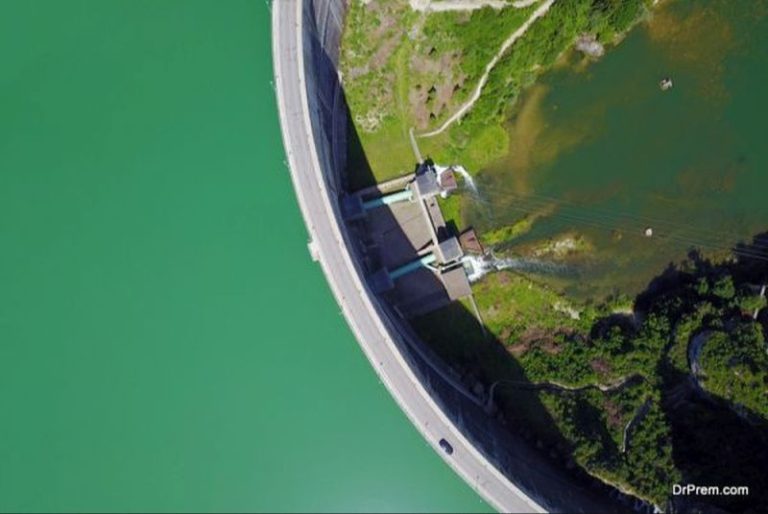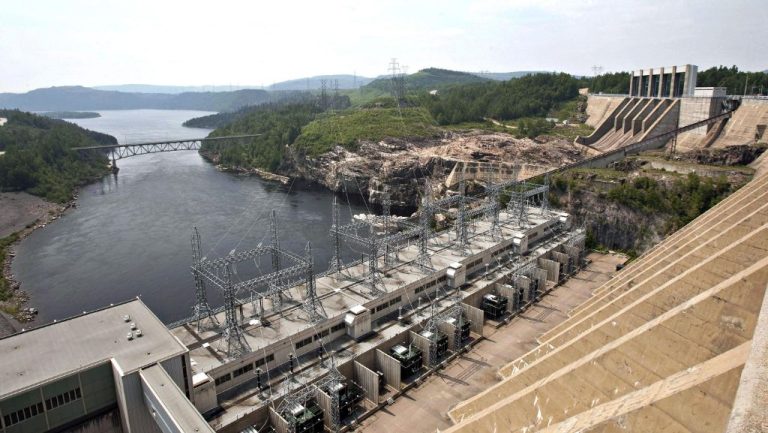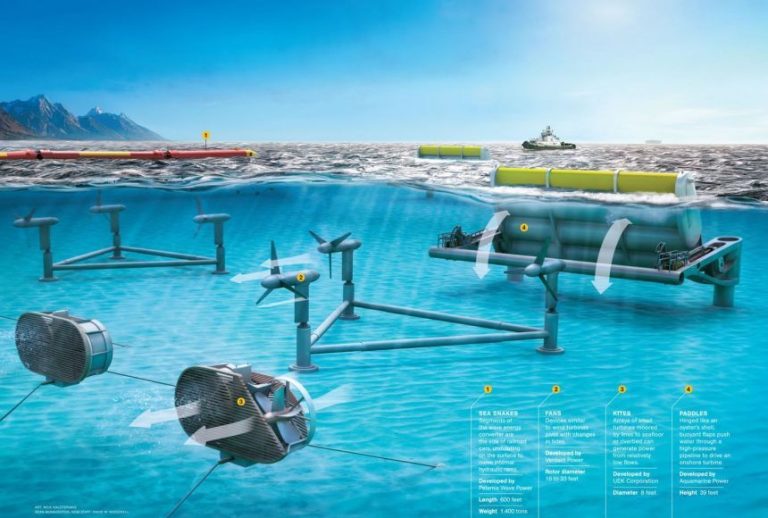How Are Wind And Water Energy Similar?
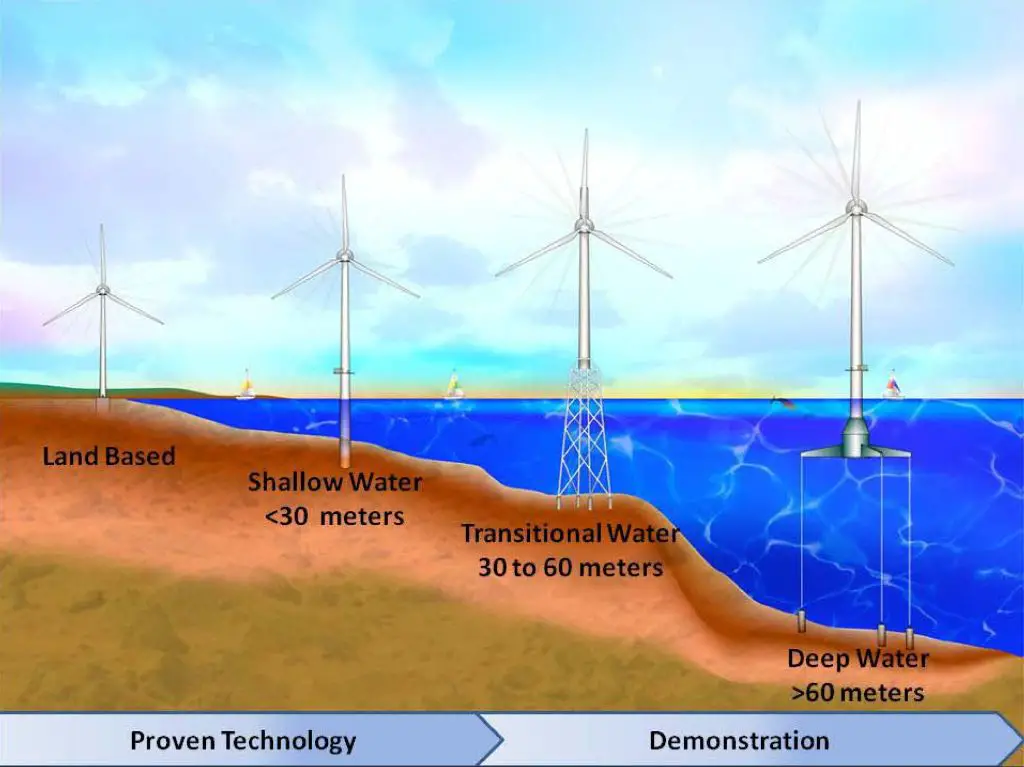
Wind and water energy are two major renewable energy sources that provide clean electricity without emitting greenhouse gases. Renewable energy comes from natural sources that are constantly replenished, so we will never run out of these energy supplies as long as the sun shines, the wind blows, and the water flows. Both wind and water power are driven by the natural forces of weather patterns and gravity. Wind energy harnesses the kinetic energy of moving air to spin large wind turbine blades and generate electricity. Hydropower captures the potential energy of flowing or falling water to produce mechanical energy that is converted into electricity. As renewable resources, wind and hydropower offer sustainable alternatives to burning fossil fuels like coal, oil and natural gas, which release carbon dioxide and contribute to climate change when used to produce electricity.
Generating Electricity
Both wind and water can be used to generate electricity through turbines. Wind turbines use the kinetic energy of wind to spin turbine blades, while hydroelectric turbines use the kinetic energy of flowing water to spin turbine blades. In both cases, the spinning turbine converts the kinetic energy into mechanical energy. This mechanical energy then turns a shaft inside a generator which converts the mechanical rotation into electrical energy through electromagnetic induction.
For wind, the wind turns two or three propeller-like blades around a rotor. The rotor is connected to the main shaft, which spins a generator to create electricity (1). Wind turbines can be used on land or offshore in large bodies of water.
For hydroelectric power, the moving water strikes turbine blades that are integrated into a dam or are placed in a river or tidal area. The motion of the water spins the blades, which rotates a shaft to convert the energy into electricity via a generator (2).
So in summary, both wind and water power rely on the kinetics of naturally moving resources (wind or water) to generate mechanical energy that is then converted into usable electricity through turbines and generators.
(1) How Do Wind Turbines Work? | Department of Energy
(2) How does a wind turbine work? | National Grid Group
Variability
Both wind and hydropower are considered intermittent or variable sources of renewable energy. This means their power output can fluctuate based on environmental conditions (What is “Intermittency” in Renewable Energy?).
The amount of electricity generated by wind turbines depends on wind speed and consistency. Wind power can vary greatly hour to hour, day to day, and season to season (Intermittent Renewable Energy).
Similarly, hydropower output relies on water flow, which can change due to drought, rainfall, and seasonal variations in river flows. Hydropower is considered highly variable like wind power (Intermittent electricity).
This variability and intermittency poses grid integration challenges for both wind and hydropower, requiring backup power sources or storage to smooth out supply.
Grid Integration
Integrating wind and water energy sources into the electric grid can pose challenges. The intermittent and variable nature of wind and water resources can create issues with grid stability and matching supply with demand (The Challenges of Wind Turbine Integration into Power Grids). Large fluctuations in output from these resources makes it difficult for grid operators to maintain voltage and frequency within acceptable ranges (Grid Integration Challenges of Wind Energy: A Review).
Upgrading transmission infrastructure is often needed to bring wind and hydroelectric power from remote areas to load centers. Congestion can occur when existing transmission lines lack sufficient capacity (Deep Dive Into The Grid Integration Challenges of Wind Power). Wind and water energy may also need additional grid flexibility services like storage to firm up their variable output.
Inadequate forecasting of renewable generation can make day-ahead scheduling of dispatch challenging. Better forecasting tools and coordination with grid operators is key to smoother integration (Grid Integration Challenges of Wind Energy: A Review). Overall, integrating high levels of wind and hydro resources requires careful planning, infrastructure upgrades, advanced operational strategies, and flexible complementary generation.
Locations
There are certain ideal locations that tend to maximize wind and water energy. For wind energy, the best locations are areas that experience consistent and strong winds. Wind turbines are often set up in open areas without major obstructions, like plains, onshore locations near oceans, offshore coastal areas, and hilltops. The central plains in the United States, coastal regions in Europe, and parts of Asia with open terrain are prime examples of ideal wind farm locations. The most efficient wind turbines are now taller than ever and can access the stronger winds at higher altitudes.
Water energy is best harnessed on rivers with high volumes of water flow and waterfalls or dams that allow for hydropower reservoirs and controlled release of water. Major rivers across many parts of the world, including parts of Asia, Africa, South America, and North America, possess good hydropower capacity. Building hydroelectric dams and diverting water allows the capture and utilization of the water’s powerful kinetic energy as it flows downstream or falls. While costs, regulations, and environmental impact must be considered, locations with high water flow offer ideal opportunities to harness hydroelectricity.
Environmental Impacts
Both wind and hydroelectric power can provide clean energy with low carbon emissions compared to fossil fuels, but they also have environmental tradeoffs that must be considered.
Wind power avoids air pollution, greenhouse gases, and water use associated with fossil fuels. However, wind turbines can negatively impact wildlife like birds and bats through collisions and habitat disruption (Wang 2018). Careful siting is needed to minimize wildlife impacts.
Hydropower avoids air pollution and greenhouse gases, but dams fundamentally alter river ecosystems through flow changes, habitat loss, and blocking fish migration. Dams can also increase methane emissions from decomposing organic matter (Innovation News Network).
Overall, wind power has a lower environmental impact than large hydropower dams that drastically alter rivers. However, wind turbines must still be sited thoughtfully. Both technologies can provide clean power but also have tradeoffs.
Costs
When comparing the costs of wind and hydroelectric power, there are some similarities but also key differences. According to a Quora post, the costs per kWh for building and operating new plants are roughly:
Wind: 4-8 cents per kWh
Hydro: 5-15 cents per kWh
So the cost range overlaps, with hydro showing more variability depending on the size of the installation. In general, wind power tends to be at the lower end of costs for renewable energy, while hydropower can be more expensive due to larger civil infrastructure requirements like dams and reservoirs. However, once built, the operating costs of hydropower plants are very low.
The levelized cost of energy (LCOE) for hydro ranges from $30-80 per MWh compared to $40-60 for onshore wind, according to International Renewable Energy Agency data. So over the lifetime of a project, costs are comparable. Location and existing infrastructure make a big difference for both technologies.
Overall, wind and hydro have become cost-competitive with fossil fuels in many markets, with costs continuing to fall. But hydropower’s upfront capital costs can be prohibitive. Both offer affordable renewable energy options in the right locations.
Storage
One of the main challenges with wind and water power is their intermittent nature, as they rely on wind speeds and water flows that can fluctuate. To address this, storage solutions are critical to enable the integration of more renewable energy onto the grid.
Batteries are one storage solution being utilized more for renewables. Large-scale battery storage systems help to smooth out the variability from wind and hydro power generation. They store excess energy when winds are high or water flows are strong, and then dispatch power to the grid when renewable resources decline. According to the Crown Battery article The Rise of Renewable Energy: How Batteries are Powering the Change, batteries can “stabilize the grid and maximize renewable energy integration.” Lead acid batteries in particular are well-suited for renewables given their low cost and recyclability.
Another storage technology is compressed air energy storage (CAES), where excess electricity is used to compress air in underground caverns/reservoirs. This compressed air can then be expanded to drive turbines when electricity demand rises. The European Commission notes CAES can enable greater adoption of renewables by “providing reliable back-up power.” Pumped hydro storage is also commonly used, where water is pumped uphill to a reservoir and then released to generate power when needed.
Capacity
According to Our World in Data, as of 2020 there was over 720 GW of installed wind energy capacity globally. This includes both onshore and offshore wind sources. The International Energy Agency notes that in 2022, 93% of the total 900 GW of global wind capacity was from onshore wind farms.
The U.S. Energy Information Administration reports that at the end of 2019, the United States had 103 GW of installed wind capacity, up from just 25 GW in 2009. Nearly all of the U.S. wind capacity (77%) has been installed in the past decade. Wind has now surpassed hydropower as the most-used renewable energy source for utility-scale electricity generation in the United States.
Conclusion
In conclusion, wind and hydro power share some key similarities and differences when it comes to generating electricity. Both rely on natural forces – the movement of wind and water – to generate renewable power without emitting greenhouse gases. However, hydropower is generally more reliable and consistent since water flow can be controlled, while wind speeds vary greatly. Both require specific geographic locations to be viable – windy areas and flowing water sources. While hydropower facilities and dams have greater potential environmental impacts on rivers and wildlife, wind turbines can harm birds. Wind power is more modular and scalable, with smaller projects and faster deployment, whereas hydropower requires major infrastructure like dams. Overall, wind and hydropower complement each other as renewable sources of electricity, with hydropower providing base load power and wind offering additional generation capacity.

